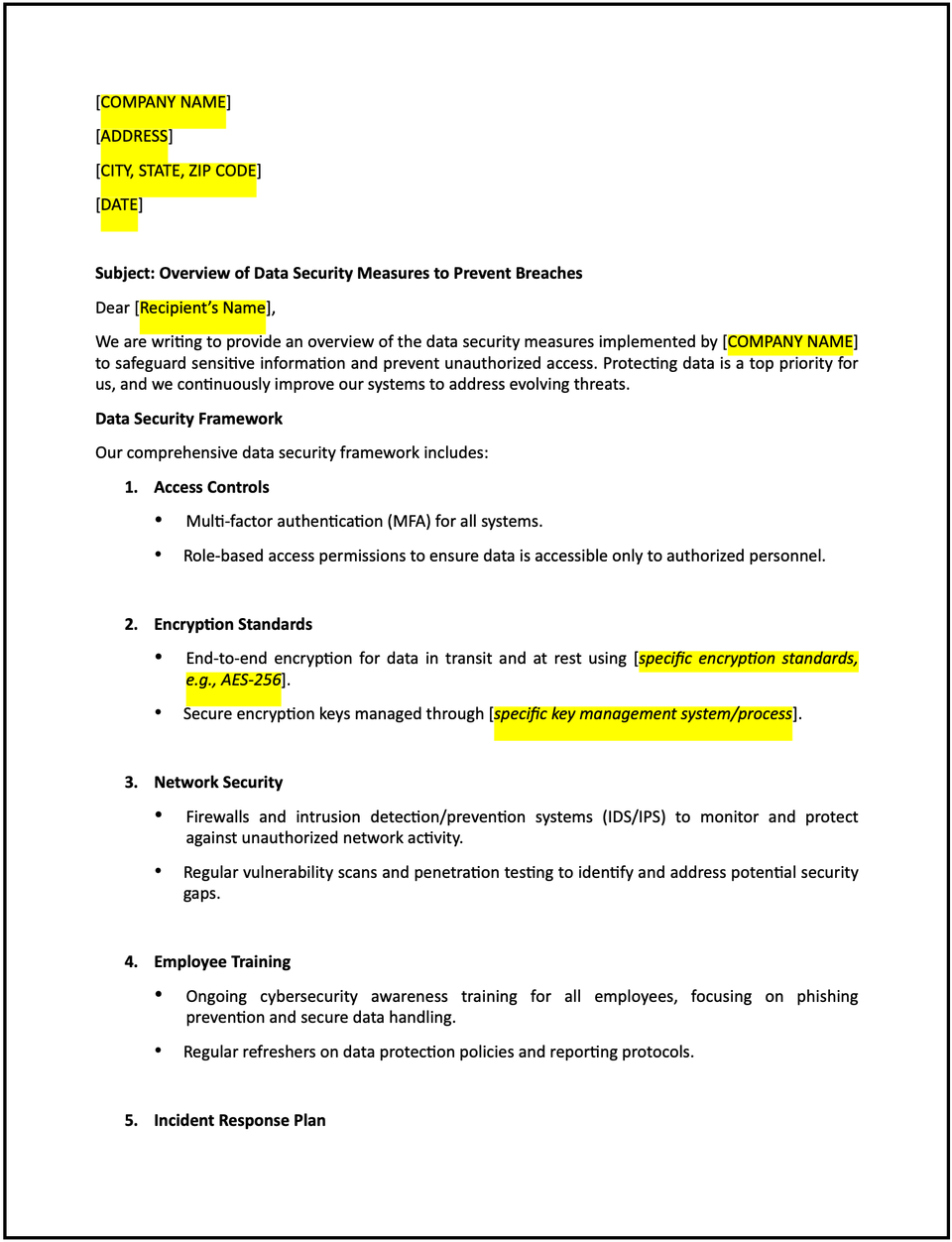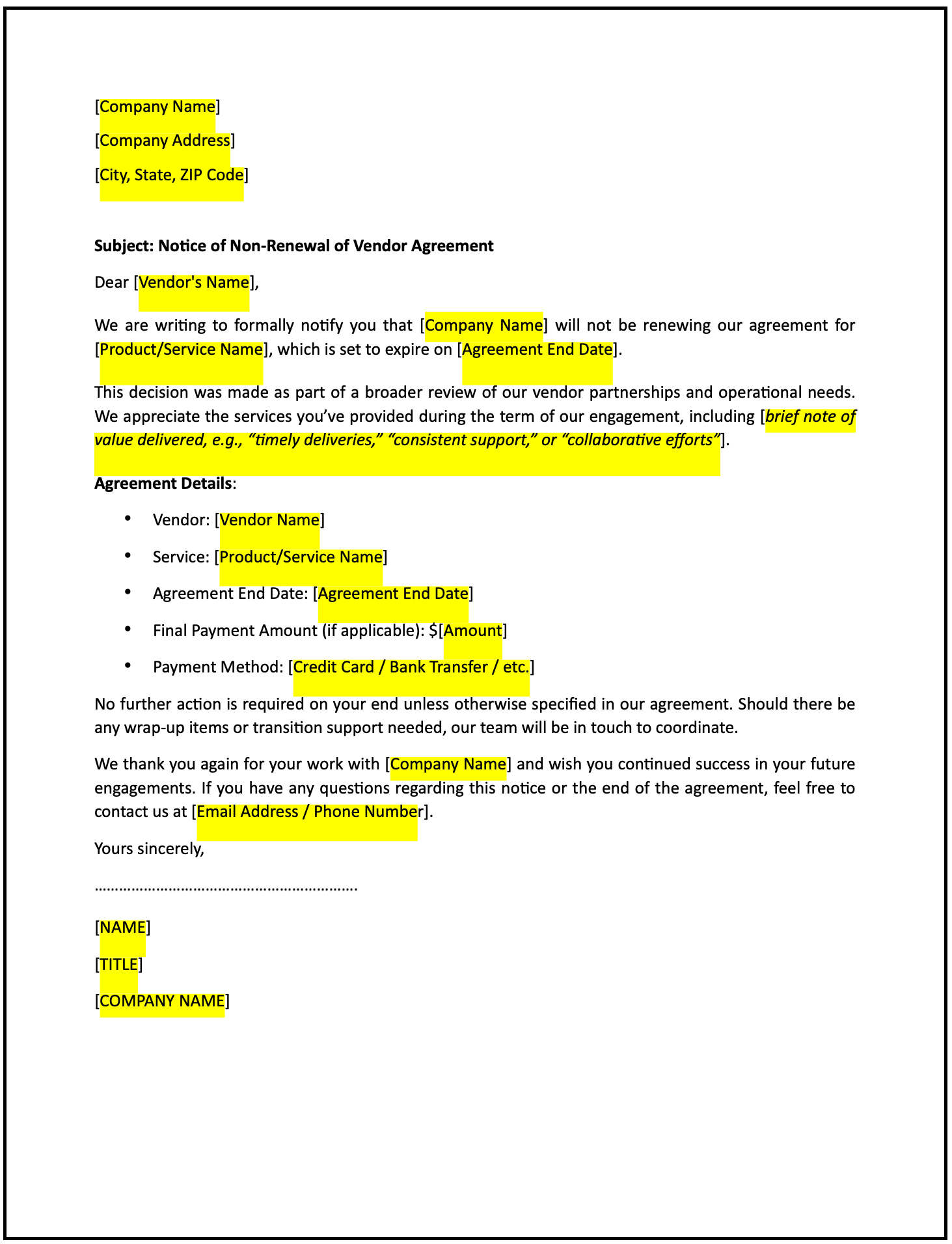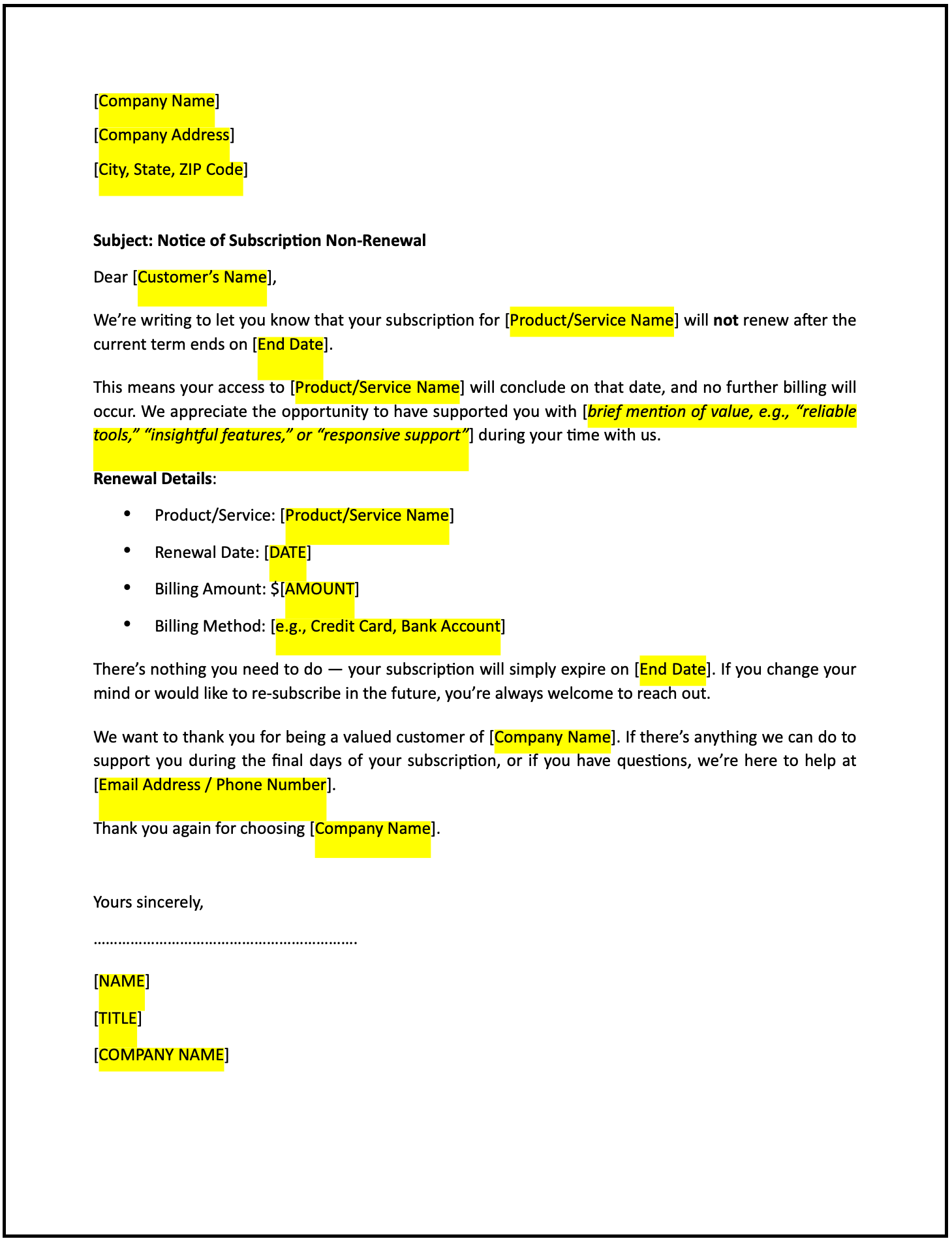Letter outlining data security measures taken to prevent breaches: Free template

Letter outlining data security measures taken to prevent breaches
Sharing details of your data security measures demonstrates transparency and reassures customers, partners, or stakeholders of your commitment to safeguarding sensitive information. This letter provides a professional way to explain the security protocols in place, highlight compliance with standards, and build trust.
How to use this letter outlining data security measures taken to prevent breaches
- Open with reassurance: Start by affirming your commitment to protecting data and addressing security proactively.
- Highlight your approach: Provide an overview of your organization’s stance on data security and its importance to your operations.
- Detail security measures: List key technical, administrative, and physical measures implemented to prevent data breaches.
- Emphasize compliance: Reference adherence to relevant data protection regulations and industry standards, such as GDPR, CCPA, or ISO certifications.
- Reassure monitoring and updates: Explain your continuous efforts to monitor, update, and improve your security infrastructure.
- Offer contact for questions: Provide details for stakeholders to reach out with questions or concerns about your data security practices.
- Maintain a professional tone: Ensure the letter is clear, respectful, and customer-focused.
Benefits of using a letter outlining data security measures taken to prevent breaches
This letter template ensures a structured and professional way to communicate your data security practices while fostering trust and confidence. Here’s how it helps:
- Builds trust: Demonstrating a proactive approach to security reassures stakeholders of your commitment to protecting their data.
- Enhances transparency: Sharing details about your measures reflects accountability and openness.
- Reflects professionalism: A well-crafted letter reinforces your reputation for ethical and secure practices.
- Reduces concerns: Addressing data security proactively helps alleviate fears of potential breaches.
- Strengthens relationships: Proactive communication fosters confidence and long-term loyalty.
Tips for writing an effective letter outlining data security measures taken to prevent breaches
- Be specific: Clearly describe the measures in place and how they address potential threats.
- Use professional language: Maintain a respectful and confident tone to build stakeholder assurance.
- Highlight compliance: Reference adherence to data protection regulations and standards to demonstrate credibility.
- Emphasize proactivity: Explain how your organization monitors and improves security regularly.
- Keep it concise: Focus on the key points without overwhelming the reader with excessive technical details.
Frequently asked questions (FAQs)
Q: What details should I include in this letter?
A: Include an overview of your security measures, compliance with standards, and steps taken to monitor and update protections.
Q: Should I personalize the letter?
A: While not mandatory, addressing the recipient directly can make the communication more engaging and relevant.
Q: Who typically receives this letter?
A: Send the letter to customers, partners, stakeholders, or regulatory bodies requesting information about your data security practices.
Q: How formal should this letter be?
A: The tone should be professional and confident, focusing on clarity and reassurance.
Q: When should this letter be sent?
A: Send the letter proactively during onboarding, audits, or in response to requests for information.
Q: Can this letter include a visual representation of security measures?
A: Yes, attaching diagrams or summaries of your security framework can enhance clarity and impact.
Q: Is acknowledgment from the recipient required?
A: While not required, inviting feedback or further questions ensures open communication and builds trust.
This article contains general legal information and does not contain legal advice. Cobrief is not a law firm or a substitute for an attorney or law firm. The law is complex and changes often. For legal advice, please ask a lawyer.


